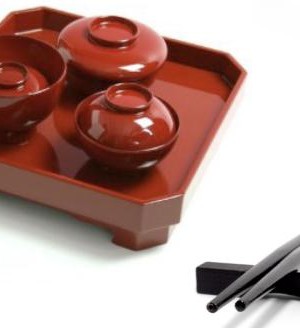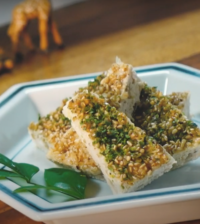- Belgium comes to Yamashita Park
- Residential Villa in Phuket Entices Remote Workers With Long-Stay Rates
- Rare pieces of French glass art at the Mirai Museum of Art
- Feast on fresh fish and seafood at the 2024 ‘Sakana’ Festival
- Would you like to ride in a Louis Vuitton gondola lift?
- Naked Snow Aquarium
- Festive lights at Yomiuriland will get you feeling the holiday vibes
Are urushi and shikki the world’s first glue?

It has been used to coat Japanese furniture and chests, sliding doors, walls, interior trim and other architectural fittings in temples, shrines, shops and homes. It has been used to seal weapons such as bows and sword handles, eating vessels such as casks and bowls, as well as a variety of daily utensils, including spoons and chopsticks. In the past and still today, exquisite pieces of art have been, and continue to be created using it.Some date it as far back as 4500 B.C., while others believe that it really made inroads during the Jomon period (ca.10,000-300 B.C.), just over 2000 years ago, when it started to be regularly cultivated.
But regardless of its exact origins, Japan continues to be its finest producer worldwide, with Korea and China coming in a close second.
Urushi or lacquer, is the clear brown sap of the Urushi tree (Thus verniciflua) that, after being collected, aged for three to five years, then refined into a resin and exposed to high moisture or humidity and air, hardens into a clear, extremely durable, plastic-like substance, that repels water, resists acid, alkali, salt and alcohol, prevents rotting and is a good insulator of both heat and electricity.
And while it is most often applied to wood, it is not uncommon to apply urushi to basketry, leather, paper, pottery ad more recently to plastic and metal as well. Some contemporary designers are also finding urushi useful in making jewelry and modern writing instruments.
From the practical to the aesthetic
In order for lacquerware to last, anywhere from 8 to 36 coatings must be applied to some kind of ‘core’ (a bowl, tray, plate, etc.), and depending on the origin of the particular artisan, techniques can vary. However, some commonalities do exist, such as the types of coat (undercoat or shitaji, middle coat or naka nuri and top coats or uwa nuri) as well as the use of hair brushes and spatulas of cypress. For more delicate work such as tracing the fold lines of a design, fine rat-and-mouse hair brushes were used because rice flour-eating rodents’ hair were believed to be softer and delicate and will not damage any of the pieces.
So strong were urushi’s properties that it was used in the Nara period (710-94) to make dry lacquer sculptures. The basic form, shaped with hemp fabric covering a wooden frame, was repeatedly coated with layers of lacquer and cloth. Well-preserved speciments of this type of Buddhist sculpture that are over 1,200 years old include the Hachibushuu (Eight Supernatural Guardians of the Buddha) and the Juudai Deshi (Ten Great Disciples of Buddha), both considered to be national treasures located at Koufukuji in Nara.
But as the Edo period (1600-1868) came to its end, utilitarian lacquerware (shikki) was being replaced by ceramics (imari), due mostly to the ease, speed and efficiency of the kiln iring process.
Lacquerware was further replaced during the Meiji period (1868-1912), with the introduction of metal ware and other artificial varnishes. Today, while the tradition continues, it is preserved mostly as an art form, with the best Japanese lacquerware coming from distinct regions of the country including Ishikawa prefecture where Wajima Nuri is best known for its make-e (or sprinkled fun) with its rich gold or metallic decoration, and for chinkin, an incised design covered with gold dust or foil; Fukushima prefecture’s Aizu Nuri style of colorful, hand painted patters also specializing in chinkin; Aomori’s Tsugaru Nuri intricately layered polychrome patterned and sanpapered style; Kamakura’s and Kanegawa’s Kamakura Bori style for its deep red lacquering and ornately carved surfaces, and Gifu’s Hida Shunkei style known for the beauty of the finish and the texture of the indigenous wood used.
Today
The main qualities of Japanese lacquerware are its durability and beauty. And while traditional forms of urushi still exist, and the craft, although dwindling, does survive from generation to generation, modern technology and chemistry have created synthetic polymers that are easier and cheaper to manufacture. Yet however close they may come to depicting the craftsmanship of yore, to the discerning eye and to the collector, as well as to those who appreciate both Japanese culture and history, nothing compares to the original. So as long as the Japanese appreciation for aesthetic design, workmanship and traditional handicrafts continues, so too will urushi and shikki continue to survive.
For further information on this and other Japanese Crafts, go to http://kougeihin.jp/en/top











